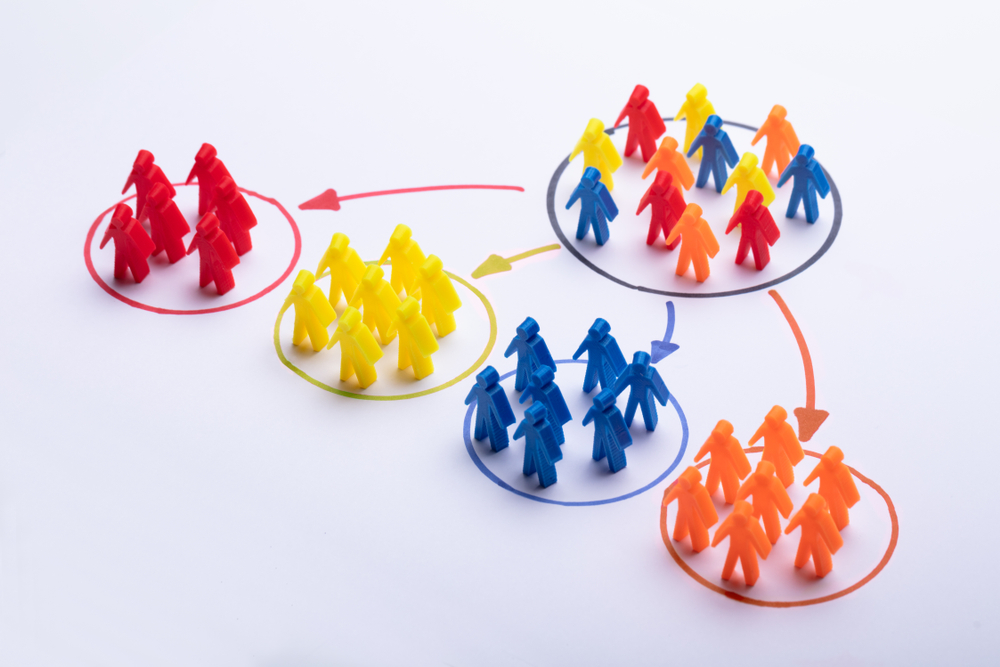
Offering tailored experiences to your customers is now a necessity.
Nearly half of consumers are likely to leave a brand for another if they are not provided with personalized experiences throughout their customer journeys.
Every subscriber has a different need, regardless of their level of involvement with your business. You must always identify and prioritize your customers’ preferences, not just what you think they’re looking for, and segmenting allows you to do that.
Find out why segmenting customers is crucial for your subscription business and how to get started.
Segmenting Customers to Enhance Your Marketing Strategies
Personalization doesn’t begin once you’ve converted a prospect into a subscriber. It starts the moment you engage with them. Analyzing where they found you, how they interacted with you, and who they are empowers you to tailor the perfect marketing strategy to gain their trust, establish a relationship, and convert them.
Segmenting your target audience allows you to design personalized campaigns for potential and existing customers.
Email Marketing
“Any marketing program [should start] with audiences and objectives,” said Stephanie Ristow, Founder of the Bariatric Society, at SubSummit 2022.
Don’t send the same email to everyone on your mailing list. It is important to tailor your promotions to each customer’s needs.
“You will be stunned by how much personalization impacts your conversion rates,” said Ristow, and the data shows it. A majority of consumers stated that they were likely to purchase from a brand again following a personalized shopping experience, according to a 2021 Twilio survey — a 14% increase since 2017.

Personalization also means being mindful of your email cadence; sending too many emails to the same group of people can lead them to unsubscribe, negatively affecting your conversion rate.
Attention to detail is key, here: You need to ensure your customers don’t appear in more than one segment within your email list. Sending two versions of the same email to one individual could lead to confusion, frustration, or worse, a cancellation.
Ristow recommends keeping your ‘unsubscribe’ rate below 1%; if you can’t achieve this goal, then the content within your email may be misleading or not targeting the right person, according to her.
Ads / Social Media
As mentioned earlier, personalization starts at the outreach stage. Segmenting your target audience early on can help you optimize your advertising strategies.
For example, dynamic gating — the number of free content pieces a specific user can read and/or see before they’re asked to commit to your brand — can increase your subscriber count by 20%, explained Douglas Patton of Condé Nast at SubSummit 2022.
Through dynamic gating and propensity modeling, you can predict which customers are most likely to subscribe and target them accordingly. Here’s how Condé Nast does it, according to Patton:
Low Propensity
Consumers who are less likely to subscribe receive an ad to sign up and create a free account without being asked to commit to the brand long term.
Medium Propensity
Consumers who are more likely to commit are encouraged to subscribe to the newsletter and potentially receive a “Subscribe Now” ad.
High Propensity
Consumers who are the most likely to subscribe receive a targeted ad with specific price points that encourages them to immediately commit to the brand.

When targeting consumers on social platforms, be mindful not to blindly launch your campaigns on the most popular ones. Although a majority of users trust YouTube, Facebook, and Instagram, it doesn’t mean your target audience does.
Rather than tailoring your social media ads based on general consumer data, go where your best prospects are.
Segmenting Customers to Maximize Customer Lifetime Value Through Personalization & Customization
Customers are looking for personalized and convenient experiences, according to the Subscription Commerce Conversion Index, and that comes at a price. Between October 2021 and May 2022, the average user has cancelled one of their five subscriptions because their expectations were not met.
In order to ensure the success of your business, you should segment your customers’ engagement with your products and their lifestyles in order to better customize and personalize their shopping experiences.
How Do Customers Engage with Your Brand?
You can segment customers based on how they engage with your brand and use your products.
Jing Xue, Director of Product Management at Wyze — a smart-home product retailer with a digital add-on subscription — shared at SubSummit 2022 how the company divides existing hardware/camera customers into two groups to market its subscription services:

New Users
For these customers, awareness is the most important factor. Wyze wants them to understand what the subscription is and what features it offers.
If your subscription has add-ons, you can offer prospective customers a free trial so they can see the value of your offering.
Committed and Existing Users
Here, Wyze leverages the intel it gathers from its existing subscriber base to better understand it needs to promote to fulfill its customers’ needs.
What Are Your Customers’ Lifestyles & Demographics?
Assembling data can sound challenging, yet it doesn’t have to be. You already have a ton of consumer data at your disposal that you can leverage right away.
Age
Consumers should be targeted differently based on their age.
For example, if you run a kids subscription box offering multiple tiers depending on age, then you need to target those kids, or their parents, differently.
Gender
If your subscription brand caters to a specific gender, then don’t waste money on showcasing your products/services to the others so that you can maximize your investment. Keep the other genders in mind during the holidays when it’s time for them to buy gifts for your target audience.

Lifestyle
Understanding what your customers do for a living helps you segment them based on their personal needs.
Xue shared that Wyze discovered that some of its users owned more than 20 cameras.
The Wyze team spent time talking to these users, trying to understand their lifestyles and what they used Wyze’s products for. Xue and her team realized that these individuals are small business owners, which enabled Wyze to create a new customer segment with its own set of opportunities.
Household Size
Take the time to understand who your customers surround themselves with. For instance, one of your users may have a spouse and several kids, while another lives with their pet. Their needs for your product/services widely differ.
Understanding your customers’ household size can better equip you to enhance your offering to exceed your subscribers’ expectations.
Segmenting Customers can Drive Stellar Customer Experience & Satisfaction
An overwhelming majority of consumers say customer satisfaction is almost as important as the products or services a company provides, according to Salesforce.
Here are some examples of how you can fulfill your audience’s needs through segmentation:
- Send samples
- Samples of your product can increase your future average order value by 15-25%, said to Patrick Campbell, CEO of ProfitWell, at SubSummit 2022. Survey your customers regularly to identify which products they’re most interested in.
- Send personalized offers
- More than half of U.S. consumers are motivated to purchase after receiving a deal, according to Jungle Scout. Utilize the data you have collected to either upsell customers or incentivize with an add-on — the most underutilized aspect of subscriptions, according to Campbell.
Segmenting Customers Will Set You Up For Success

Segmenting customers empowers you to create personalized experiences for your subscribers. It also serves as a great acquisition tool.
When Xue joined the Wyze team in 2021, the company had 300,000 subscribers. This year, Wyze has more than 1 million users, according to her, and it’s thanks to the data infrastructure she and her team created.
“If you want to be able to grow your business, data is the key. It helps you know what you’re targeting,” said Xue.

